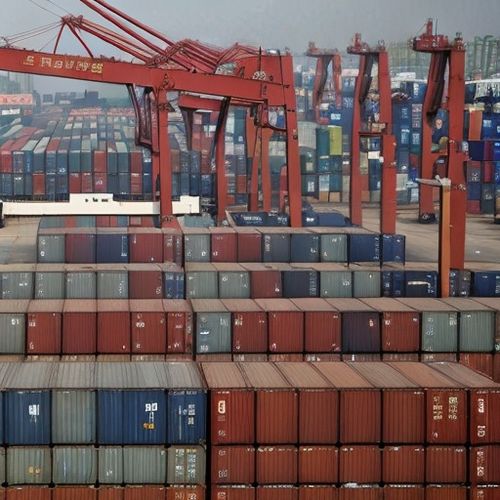In the ongoing trade war initiated by President Donald Trump, the focus has largely been on manufacturing and the US trade deficit. However, a crucial aspect that has been overshadowed is the potential impact on the US service sector, which is not only the largest part of the American economy but also enjoys a significant trade surplus. This sector, which includes everything from software and telecom services to healthcare and education, is now under threat due to the ripple effects of the tariffs and retaliatory measures.
The Service Sector: America’s Economic Backbone
The US service sector is a powerhouse, accounting for 84% of private sector jobs and contributing significantly to economic growth. In 2024, the US service sector enjoyed a trade surplus of $293 billion, up 5% from 2023 and 25% from 2022. This surplus is driven by high-value-added activities such as digitally-enabled services, which include software licenses, cloud computing, and data storage. These services are exported globally, giving the US a comparative advantage in the digital economy.
The Threat of Retaliation
Despite the service sector’s strength, it is vulnerable to retaliatory measures from trading partners. Countries like China and the European Union, which are central to the trade dispute, could impose barriers on US services. For example, China is considering restrictions on US film exports, while the EU could limit the operations of American banks or impose fines on US tech companies. Such measures could erode the US service sector’s global market share and reduce its trade surplus.
The Impact on Jobs
The service sector’s vulnerability extends to employment. While tariffs might bring back some manufacturing jobs, the loss of service sector jobs could offset these gains. The service sector employs a vast majority of the US workforce, with 84% of private sector jobs tied to it. In contrast, manufacturing jobs, which have been declining due to automation and technological advancements, now account for less than 10% of private sector employment. The potential for job losses in the service sector, especially in industries like healthcare, education, and financial services, is a significant concern during a recession.
The Broader Economic Impact
The tariffs and trade war have broader implications for the US economy. The Tax Foundation estimates that Trump’s tariffs could reduce US GDP by 1.0% and after-tax income by an average of 1.3%, amounting to an additional $1,300 tax burden per household in 2025. These tariffs also risk triggering a global recession, with J.P. Morgan raising its forecast of a global economic downturn to 60% by year-end. The impact on international students and tourists, who contribute significantly to the US economy, is also concerning. The Trump administration’s policies have led to a decline in international student visas and tourist visits, potentially costing billions in lost revenue.
The Path Forward
To mitigate these risks, policymakers must consider a balanced approach that addresses legitimate concerns about trade imbalances while protecting the service sector’s global competitiveness. This could involve negotiating more favorable trade agreements and reducing retaliatory measures. Additionally, investing in digital infrastructure and innovation can strengthen the service sector’s resilience. For businesses, diversifying markets and enhancing digital capabilities can help navigate the uncertainties of the trade war.
In conclusion, while the trade war’s immediate focus has been on manufacturing and goods, its long-term impact could be felt most acutely in the service sector. Protecting this sector is crucial for maintaining economic stability and ensuring continued growth. As the US navigates these challenges, it must balance the need for trade reform with the imperative to safeguard its most vital economic asset: the service sector.

By Samuel Cooper/Apr 14, 2025

By Michael Brown/Apr 14, 2025

By Emma Thompson/Apr 14, 2025

By David Anderson/Apr 14, 2025

By Megan Clark/Apr 14, 2025

By Emma Thompson/Apr 14, 2025

By Thomas Roberts/Apr 14, 2025

By Rebecca Stewart/Apr 14, 2025

By Natalie Campbell/Apr 14, 2025

By Laura Wilson/Apr 14, 2025

By Ryan Martin/Apr 14, 2025

By Elizabeth Taylor/Apr 14, 2025

By Laura Wilson/Apr 14, 2025

By Sophia Lewis/Apr 14, 2025

By Laura Wilson/Apr 14, 2025

By Elizabeth Taylor/Apr 14, 2025

By Amanda Phillips/Apr 14, 2025

By Sarah Davis/Apr 14, 2025

By Samuel Cooper/Apr 14, 2025